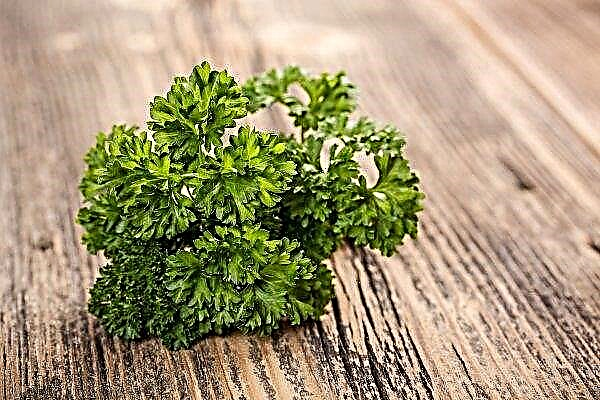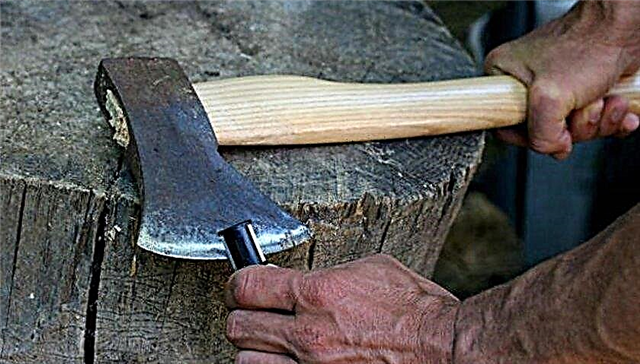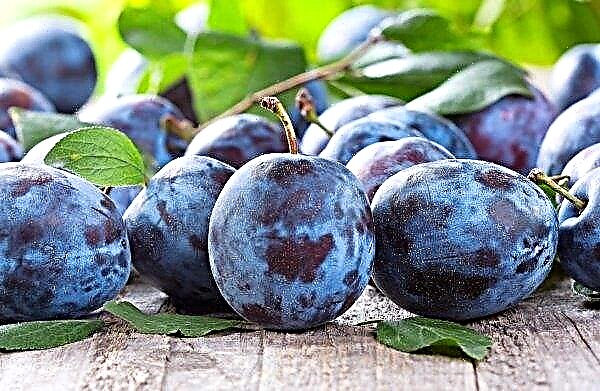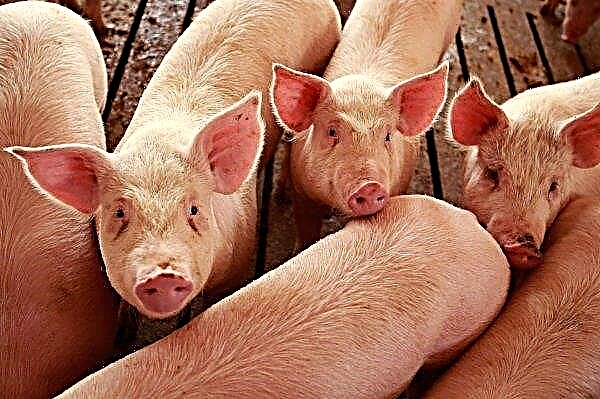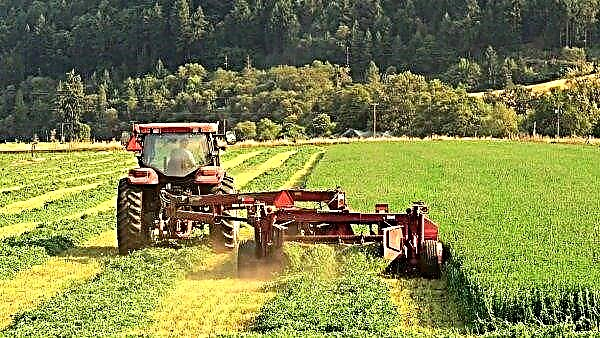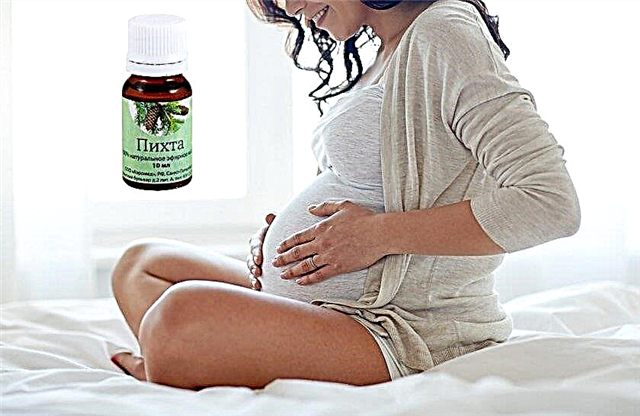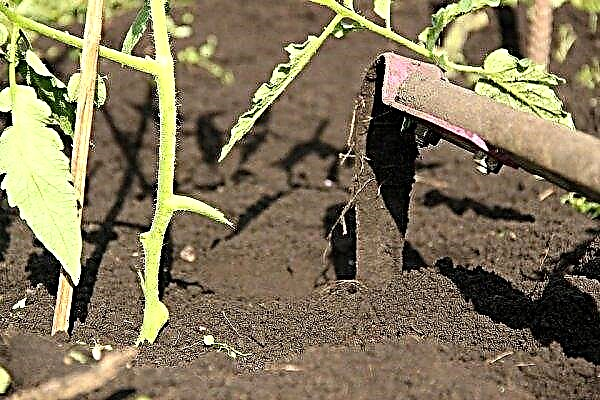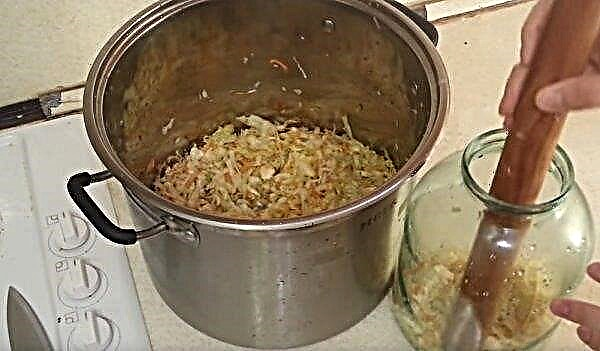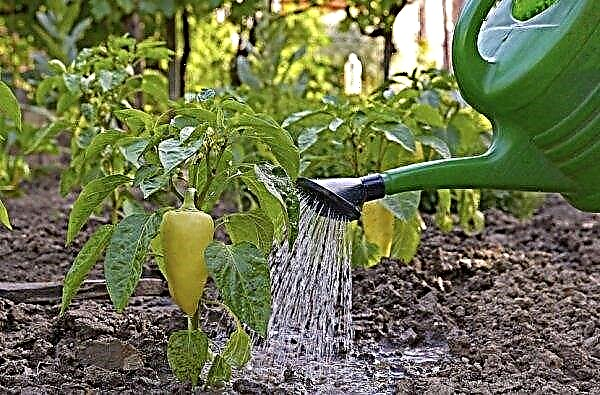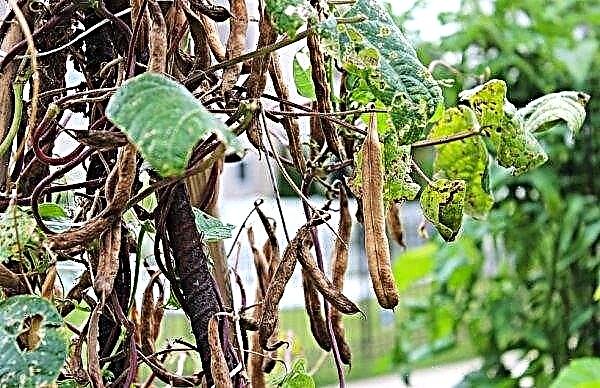Modern greenhouses or greenhouses in farms make it possible to create comfortable and favorable conditions for the cultivation of many garden crops. But in order for vegetable growing to remain profitable, they need to be engaged year-round. A large selection of films for greenhouses allows you to organize the cultivation of vegetables at any time of the year. What are the varieties of films, and what is their feature, let's understand.
Film coating properties
At the stage of choosing a film coating for greenhouses, many ask themselves what kind of high-quality film should be.
According to generally accepted building codes, a cover for greenhouses should have the following qualities:
- excellent wind resistance;
- light scattering ability;
- breathability, ability to pass oxygen and carbon dioxide well;
- ability to retain heat well;
- high elasticity;
- high resistance to atmospheric phenomena;
- excellent tensile strength;
- antistatic qualities;
- long term of operation.
Did you know? Every year over 1 trillion plastic bags are sold in the world. Moreover, the period of decomposition of the material is 1000 years. The first who refused to use this package was the American island of Hawaii.
Varieties of greenhouse film
Today on the market there is a wide range of films that can fully satisfy all the requirements for them.
Unstabilized polyethylene
The most common economical option is considered to be an ordinary polyethylene (PE) unstabilized film.
- Its advantages are as follows:
- affordable cost;
- good wind protection;
- excellent light transmittance.
 This coating material does not retain heat well at night, forms condensate, which contributes to the development of fungi and the formation of mold, has a short service life of a maximum of 7–9 months. Such a coating is suitable for use only for one season. An unstabilized film is usually implemented in the form of rolls 1-3 m wide or in the form of a sleeve.
This coating material does not retain heat well at night, forms condensate, which contributes to the development of fungi and the formation of mold, has a short service life of a maximum of 7–9 months. Such a coating is suitable for use only for one season. An unstabilized film is usually implemented in the form of rolls 1-3 m wide or in the form of a sleeve.Important! On the market is a film of various thicknesses. But this indicator will not in any way affect the life of the coating, therefore, when choosing between films of different thicknesses, less expensive should be preferred.
Stabilized hydrophilic polyethylene
Through the use of various additives, manufacturers were able to produce a stabilized hydrophilic PE coating with excellent ability to absorb sunlight, reflect heat and not form condensation on the surface of the greenhouse. In addition, the composition of the material was supplemented with antistatic components that prevent dust from accumulating and allow the film to remain transparent throughout the entire period of operation. At night, the heat in the greenhouse of hydrophilic polyethylene is much better preserved. The daily temperature fluctuations are almost imperceptible, which positively affects the condition of plants inside the greenhouse. Excellent technical and operational characteristics contribute to a rather long period of use of the material, which is 3-4 seasons.
At night, the heat in the greenhouse of hydrophilic polyethylene is much better preserved. The daily temperature fluctuations are almost imperceptible, which positively affects the condition of plants inside the greenhouse. Excellent technical and operational characteristics contribute to a rather long period of use of the material, which is 3-4 seasons.
Important! The greenhouse film is characterized by a long service life, however, manufacturers give only 3 years of warranty in terms of frost resistance.
Heat holding
The heat-retaining coating will be an ideal option for those who are trying to save on heating in the winter. Matt whitish material has an excellent heat-saving function, increased ability to absorb thermal radiation, antifog (anti-fogging effect), antistatic and hydrophilic qualities. In the middle of a greenhouse covered with a heat-holding film, temperature indicators are always 2-3 degrees higher than in others. Such material, due to its quality, is recommended for use in regions with unstable climatic conditions, where large differences in night and day temperatures often occur. Among the shortcomings of this coating, experts note a low strength and insufficient elasticity. The service life of the film is approximately 2 seasons.
Such material, due to its quality, is recommended for use in regions with unstable climatic conditions, where large differences in night and day temperatures often occur. Among the shortcomings of this coating, experts note a low strength and insufficient elasticity. The service life of the film is approximately 2 seasons.
Important! The width of the cover sheet should be as close as possible to the size of the frame for the greenhouse.
PVC
PVC film of all types is the most durable, practical and flexible. According to manufacturers, the period of its service is 8 years. It is intended for use in regions with a large number of sunny days per year.
- In addition, PVC boasts such properties:
- excellent light transmission - up to 90% of light and 80% of ultraviolet light;
- high strength and elasticity;
- heat preserving functions;
- excellent indicators of frost resistance, moisture resistance;
- ability to retain over 95% of infrared radiation.
 PVC coating is subject to sagging and stretching, which is why its installation should be done with special care. Another disadvantage of this material is its relatively high cost, compared to other types.
PVC coating is subject to sagging and stretching, which is why its installation should be done with special care. Another disadvantage of this material is its relatively high cost, compared to other types.Did you know? Many mistakenly believe that the greenhouse and the greenhouse are one and the same. Despite the fact that the structures are designed for the same purpose, the main difference is the method of plant maintenance. In greenhouses, crop care is carried out outside, and in greenhouses from the inside.
Reinforced
Reinforced polyethylene film is made on the basis of a conventional stabilized coating material with additional reinforcement with strong PE threads, 0.29–0.32 mm thick. Since the threads used for reinforcement have high strength, the final product - the film - also receives increased strength properties, thanks to which it can last at least 2 years. The main disadvantage of the reinforced coating is considered to be a low degree of light transmission, which is explained by densely installed reinforced threads that reduce throughput.
Copolymer reflective
To organize greenhouses in regions with the harshest climate, experts advise using a copolymer reflective film, which is highly resistant to cracking, frost resistance. Due to its high strength, it is able to withstand high loads, withstand strong winds. The material has good hydrophilicity, due to which moisture in the form of drops is evenly distributed over the surface of the entire greenhouse. The copolymer coating has a high light transmission, which is considered its main disadvantage, since on bright days vegetables grown in a greenhouse run the risk of overheating.
The material has good hydrophilicity, due to which moisture in the form of drops is evenly distributed over the surface of the entire greenhouse. The copolymer coating has a high light transmission, which is considered its main disadvantage, since on bright days vegetables grown in a greenhouse run the risk of overheating.
Acrylic
A special feature of the acrylic greenhouse film is its ability to “breathe”. It perfectly passes air, prevents the formation of condensate, and keeps stable temperature indicators inside the greenhouse. In addition, it has good light transmission, the rate of which varies from 82–85%. The service life of acrylic material, in the absence of heavy winds and large hail, reaches 3 years. Among the negative qualities of the coating can be noted low strength and elasticity.
Density, Thickness and Dimensions
Summer residents with little experience in construction work suggest that the thicker the film for the greenhouse, the more reliable and durable it is. However, for ordinary polyethylene coatings, this indicator has no special value and does not affect its service life.
The most important parameter for the coating material is the presence of light stabilizing components that prevent the negative effects of ultraviolet radiation, which destroys the structure of the film. Of course, the process of destruction of the material under the influence of ultraviolet rays is inevitable, but it can be slowed down by means of stabilizers.
Visually distinguishing a coating with a thickness of 100 or 200 microns is almost impossible, which is why you should focus on the weight of one linear meter:
- a film 100 microns thick has a weight of 260 g;
- 120 microns - 320 g;
- 150 microns - 400 g;
- 200 microns - 530 g.
 For traditional greenhouses, experts recommend choosing a material with a thickness of 120 to 150 microns, for greenhouses made on arcs, 80-100 microns are enough. Usually in specialized stores you can buy a film in the form of rolls or sleeves, the width of which, depending on the type of material and manufacturer, can vary from 1.2 to 5 m. European manufacturers offer material with a width of up to 16 m.
For traditional greenhouses, experts recommend choosing a material with a thickness of 120 to 150 microns, for greenhouses made on arcs, 80-100 microns are enough. Usually in specialized stores you can buy a film in the form of rolls or sleeves, the width of which, depending on the type of material and manufacturer, can vary from 1.2 to 5 m. European manufacturers offer material with a width of up to 16 m.How to choose the best film for greenhouses
Modern innovative production has allowed companies to produce various types of films that differ not only in technical characteristics, but also in color. Along with traditional transparent or white canvases, today you can buy colored materials that are aimed at refracting sunlight in order to change the color, which will increase the yield of vegetables grown. In cloudy weather, vegetables are deficient in yellow and red, so a multi-colored film can eliminate this shortcoming. As for other material selection parameters for greenhouses, experts recommend paying attention also to:
- hydrophilicity - the ability of the material to prevent the formation of condensate in the form of droplets on the surface;
- the presence of light stabilizing elements, which protect the canvas from destruction under the influence of UV rays;
- antistatic - the ability to repel dirt and not accumulate dust on the surface;
- heat holding function which allows you to absorb thermal radiation and maintain a comfortable microclimate inside the greenhouse.

How to make a greenhouse from a film with your own hands
Do-it-yourself greenhouse construction is based on several important steps.
Film selection. The frame of the future greenhouse is covered by a special canvas, the choice of which will depend on the purpose of the structure, climatic environmental conditions, etc. As mentioned above, it is recommended to choose a material with a thickness of 120 microns or more and a width as close as possible to the size of the frame. You can opt for a 2-layer material with light stabilized or hydrophilic qualities. If the width of the canvas is not enough, then gluing or welding of several parts is allowed.
Preparatory work. In order for the installation process to be as quick and easy as possible, preparation should be carried out in advance, which includes:
- Choosing a place to build. The area on which the structure will be installed should be smooth, well and evenly lit, with soil of the same composition and low humidity.
- Priming. Experts recommend preparing the land since the fall: digging, leveling, feeding.
- Details All wooden parts that are needed in the manufacture of the greenhouse must be treated with antiseptic agents to prevent their decay, the formation of fungi and mold.
The manufacture of the frame. The most popular type of greenhouses are arched, in which all power parts are made of steel or PVC pipes. Metal frames are more reliable, durable, practical. Plastic are characterized by ease of assembly, no need to carry out welding work to connect parts.
For the production of the frame you will need:
- polyvinyl chloride or metal pipes with a diameter of 25-30 mm;
- wooden blocks to create the basis of the design with a section of 100x100 mm;
- steel pins or fittings for fixing the greenhouse to the ground with a length of about 1 m;
- steel rods 80-100 cm long, on which pipes will be mounted;
- additional pipes that will be mounted on top of the structure to give it strength.
The manufacturing technology of the frame from PVC material is as follows:
- From wooden bars to make a box according to the previously made drawing, install it in a permanent place.
- To fix the structure, drive steel pins into the ground on the sides of the box.
- At the corners, drive steel pins 1 m long into the ground to half the length, at a distance of 50-60 cm between them.
- Put a pipe on each pair of pins so that an arch forms, fix the elements with special loops for installation.
- At the ends, install a beam of 50x50 mm to strengthen the frame, and place a pipe on top of the arch necessary for structural stability.
- Assemble a wooden box and attach it to one of the ends.
- To make doors, to cover with a film, to establish in the right place.
- Similarly, make ventilation vents.

Installation of coating material. The next step is to fasten the film web to the frame. It should be carried out with extreme caution and accuracy, paying particular attention to the attachment points, in which the film is most often damaged due to friction. Cloth to metal fittings must be fixed with special clothespins, to a plastic or wooden structure - with ready-made plastic clamps.
Film welding. When installing large greenhouses, it is often necessary to join several parts of the covering material. The problem can be solved by welding the pieces with a soldering iron or iron.
Tips for extending film life
Proper installation, as well as gentle handling, can significantly extend the life of the coating material.
In particular, experts advise to adhere to simple but important rules:
- protect the material from mechanical damage, scratches, tears, especially when performing installation work;
- make sure that the frame of the greenhouse does not have sharp corners, has a smooth surface;
- the greenhouse must be treated with an antiseptic, which reduces the risk of fungi, mold, negatively affecting the condition of the film;
- the installation of a cover sheet is advised to be carried out at temperature indicators of + 5 ... + 15 ° C;
- installation must be carried out in such a way as to eliminate sagging material, since under the influence of even a small wind, sagging cellophane easily breaks;
- it is forbidden to install a film bend on the “horse” of the structure.
 If the coating material does not differ in high strength and durability, then it is recommended to remove it from the greenhouse for the winter. A greenhouse or hotbed helps grow vegetables all year round to summer residents, which can easily be mounted independently using improvised materials. The simplest, most economical and easy option is a film construction, high-quality material for which is available in any hardware store.
If the coating material does not differ in high strength and durability, then it is recommended to remove it from the greenhouse for the winter. A greenhouse or hotbed helps grow vegetables all year round to summer residents, which can easily be mounted independently using improvised materials. The simplest, most economical and easy option is a film construction, high-quality material for which is available in any hardware store.

